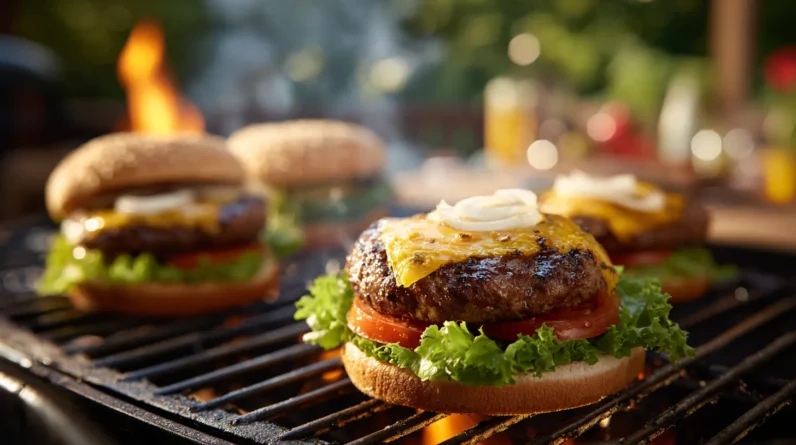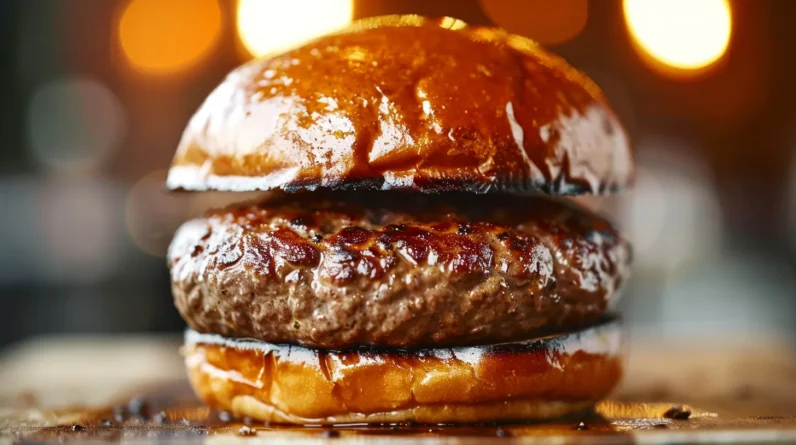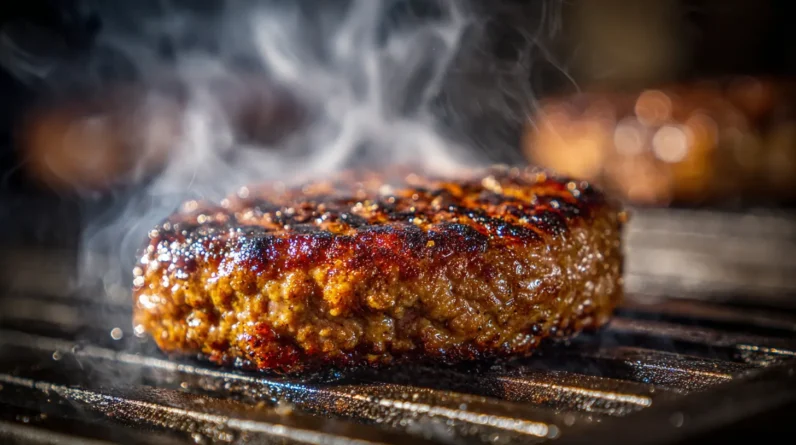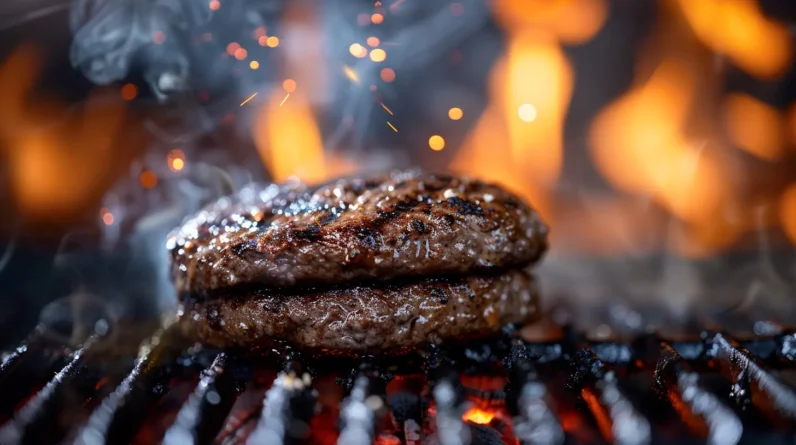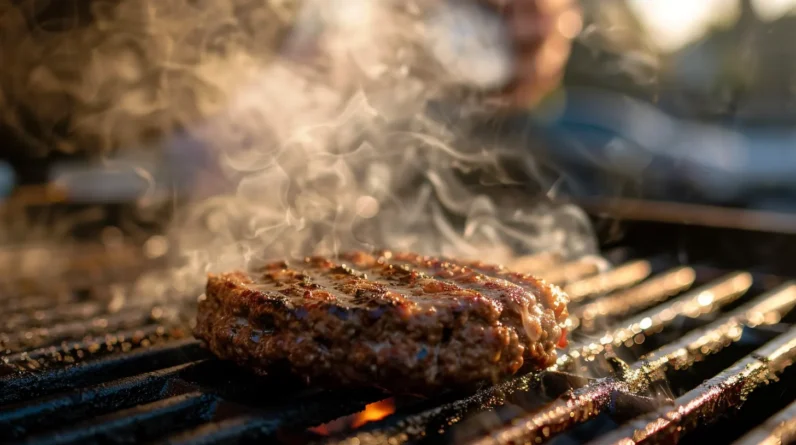
We’re on a quest for perfectly grilled burgers, and temperature control is the secret to success. We need to hit the sweet spot of 140°C to 180°C (284°F to 356°F) to access the Maillard reaction. Choosing the right thermometer, preheating and maintaining grill temperature, and timing each patty’s doneness are all essential. We’ll also need to adjust for environmental factors and grill type to achieve that perfect sear. As we explore the intricacies of temperature control, the path to sublime burgers becomes clearer.
Understanding the Ideal Temperature Range
Achieving the perfect grilled burger relies heavily on temperature control. We need to hit a specific temperature range to guarantee food safety and ideal flavor. When we grill, we’re aiming for the Maillard reaction, a chemical reaction between amino acids and reducing sugars that occurs between 140°C to 180°C (284°F to 356°F). Within this range, the perfect doneness for burgers lies between 63°C to 68°C (145°F to 154°F) for medium-rare to medium. If we stray too far from this range, we risk overcooking or undercooking the patty. To master grilled burgers, we must understand the importance of temperature control and how to maintain a consistent temperature throughout the grilling process. By doing so, we’ll achieve a perfectly cooked burger every time.
Choosing the Right Thermometer for the Job
Numerous thermometers on the market claim to provide accurate temperature readings, but when it comes to grilling burgers, we need a thermometer that can withstand high temperatures and provide instant readings. We require a thermometer with a high level of accuracy, specifically one that can read temperatures between 32°F and 550°F. A digital thermometer is the best option, as it provides quick and precise readings. Look for a thermometer with a thermocouple or thermistor sensor, which can withstand extreme temperatures. We also want a thermometer with a fast response time, ideally under 10 seconds. By choosing the right thermometer, we can guarantee perfectly grilled burgers every time. A reliable thermometer is an essential tool in our grilling arsenal, allowing us to achieve mastery over temperature control.
Preheating and Maintaining Grill Temperature
As we prepare to throw our burgers on the grill, it’s crucial that we preheat it to the ideal temperature, which is between 375°F and 425°F. This range allows for a nice sear on the outside while locking in juices and flavors. To achieve this, we’ll want to preheat our grill for at least 15-20 minutes, confirming the grates and heat deflectors are evenly heated. We’ll also want to calibrate our thermometer to verify accuracy. Once preheated, we’ll need to maintain this temperature range by adjusting our grill’s vents and fuel as needed. This will require constant monitoring, but trust us, it’s worth the effort. By maintaining a consistent temperature, we’ll be able to achieve perfectly grilled burgers every time.
Timing and Temperature for Perfect Doneness
Now that we’ve got our grill preheated and maintained at the ideal temperature, it’s time to focus on the next step: determining when our burgers are perfectly cooked. We’ll do this by monitoring the internal temperature of the patty and the time it spends on the grill. For medium-rare, we’re aiming for an internal temperature of 130°F – 135°F after 3-4 minutes per side. Medium burgers should reach 140°F – 145°F after 5-6 minutes per side, while medium-well and well-done patties should hit 150°F – 155°F and 160°F – 170°F, respectively, after 7-10 minutes per side. By carefully tracking temperature and time, we can achieve our desired level of doneness and guarantee a juicy, flavorful burger every time. Precise temperature control is key to perfect doneness.
Adjusting for Environmental Factors and Grill Type
Because environmental conditions and grill type can considerably impact the grilling process, we need to adjust our temperature control strategy to compensate for these factors. We’ll start by considering the ambient temperature and humidity, as well as wind direction and speed, which can affect grill temperature and cooking time. Next, we’ll factor in the type of grill we’re using – gas, charcoal, or pellet – as each has its own unique heat distribution patterns. For example, gas grills tend to have hotspots, while charcoal grills can experience temperature fluctuations. By taking these factors into account, we can fine-tune our temperature control to achieve perfectly grilled burgers. This nuanced approach guarantees that our burgers cook consistently and accurately, regardless of the environment or grill type.
Conclusion
We’ve now mastered the temperature control secrets for perfectly grilled burgers. Recall the Minneapolis backyard cookout where our team helped struggling grill master, Alex, revive his burgers by adjusting his grill temperature from a scorching 550°F to an ideal 375°F. With the right thermometer and timing, Alex’s patties transformed from burnt to sublime. By applying these temperature control secrets, we’ll consistently produce mouth-watering, expertly grilled burgers that impress even the toughest critics.



